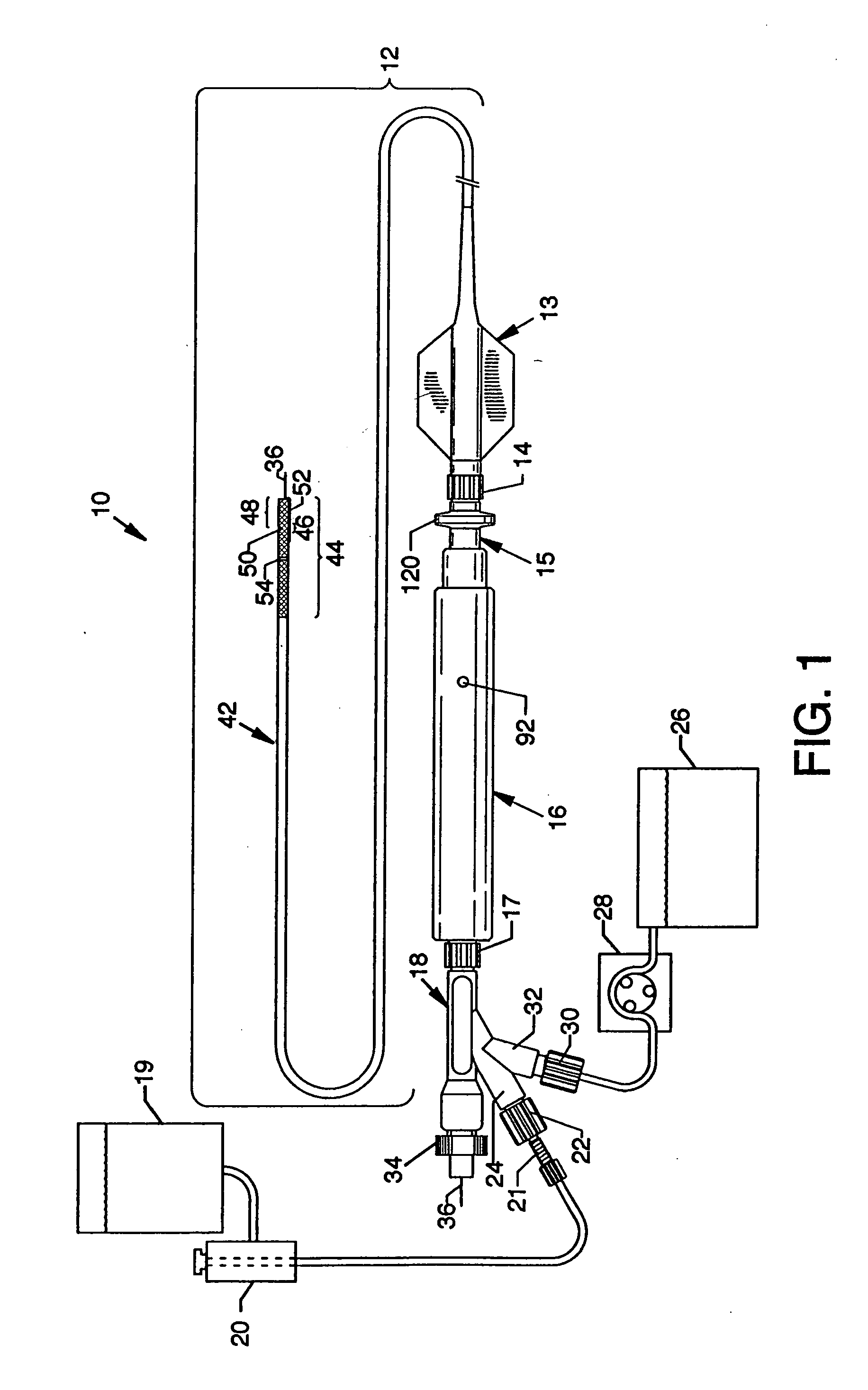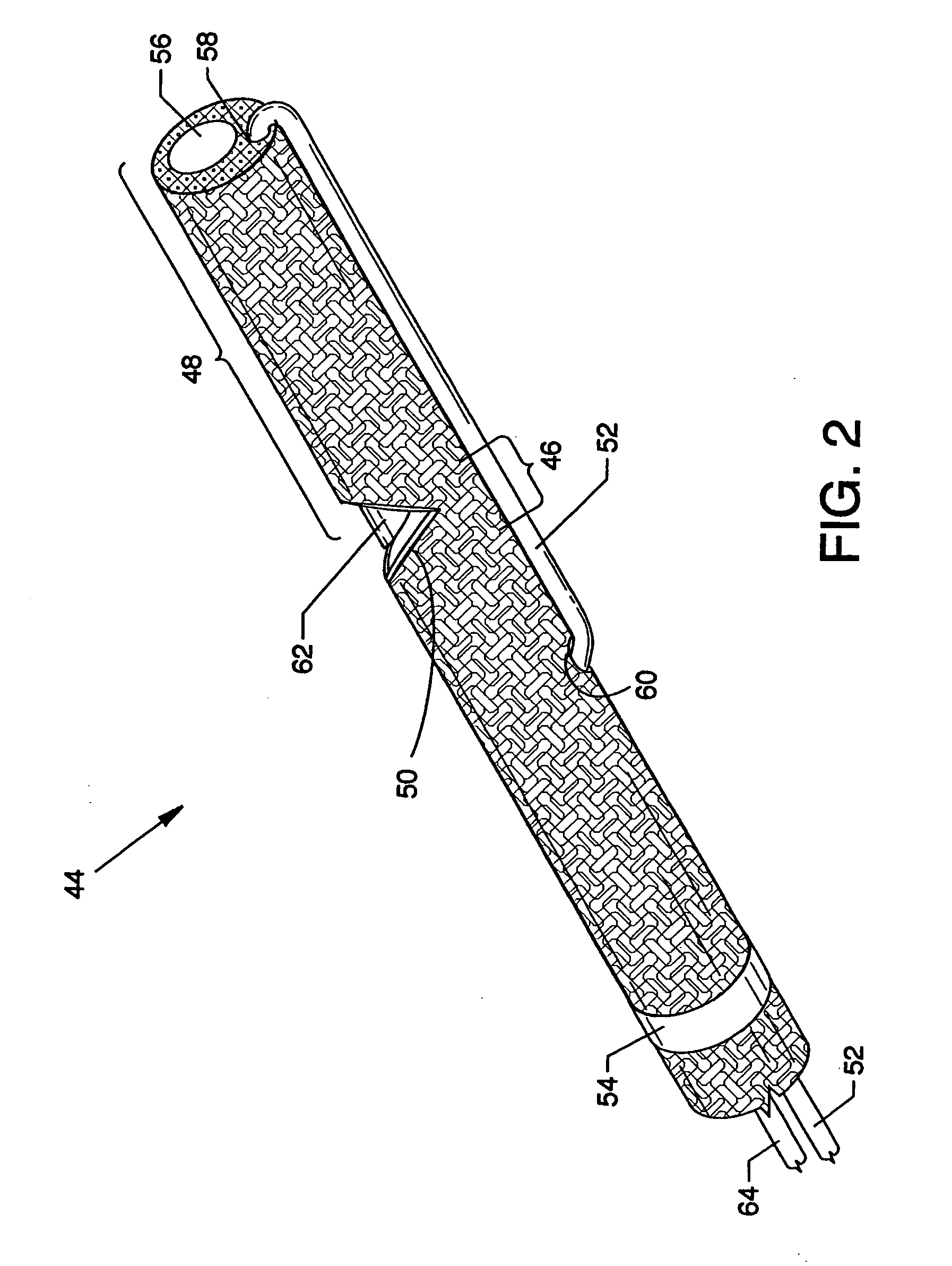Atherectomy system having a variably exposed cutter
a technology of atherectomy and cutter, which is applied in the field of improved atherectomy system, can solve the problems of safety and embolization, excessive debris being sent distally, and time-consuming to set up the rotablator® system, and achieve the effects of improving cutting efficiency, improving safety and reducing the risk of infection
- Summary
- Abstract
- Description
- Claims
- Application Information
AI Technical Summary
Benefits of technology
Problems solved by technology
Method used
Image
Examples
Embodiment Construction
[0062]FIG. 1 is a plan view of an atherectomy system having a variably exposed cutter 10, the present invention. A catheter tube 12 is connected to other aligned and connected components of the system including a hub 13, a connector fitting 14, a slide body 15, a slide tube 16, a connector fitting 17, and a manifold 18. A high pressure fluid source 19 in association with a high pressure fluid pump 20 is suitably connected to a high pressure branch 24 of the manifold 18 by flexible or other tubing and connector fittings 21 and 22. Also suitably connected to the manifold 18 by flexible or other tubing and a connector fitting 30 via an exhaust branch 32 of the manifold 18 is a collection chamber 26 in association with an exhaust regulator 28. A hemostatic nut 34 engages the proximal end of the manifold 18 for suitable sealed interaction with a guidewire 36. The catheter tube 12 has multiple lumens and is formed of a plastic coated nitinol section 42 and a nitinol section 44 without a p...
PUM
 Login to View More
Login to View More Abstract
Description
Claims
Application Information
 Login to View More
Login to View More - R&D
- Intellectual Property
- Life Sciences
- Materials
- Tech Scout
- Unparalleled Data Quality
- Higher Quality Content
- 60% Fewer Hallucinations
Browse by: Latest US Patents, China's latest patents, Technical Efficacy Thesaurus, Application Domain, Technology Topic, Popular Technical Reports.
© 2025 PatSnap. All rights reserved.Legal|Privacy policy|Modern Slavery Act Transparency Statement|Sitemap|About US| Contact US: help@patsnap.com



